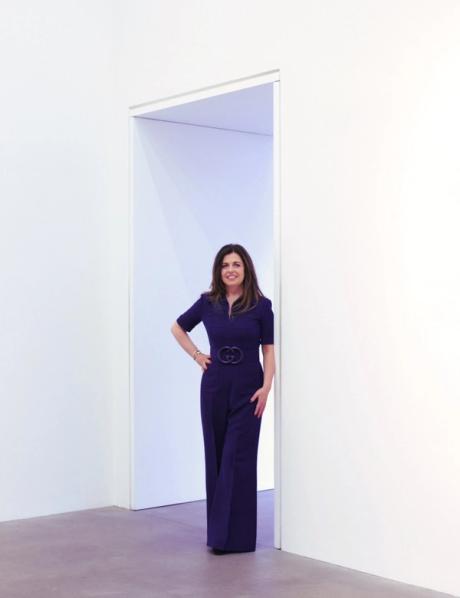
London dealer Alison Jacques is moving into a new 6,000 square foot headquarters on Cork Street this autumn after 16 years on Berner Street in the neighboring West End. “I just felt it was time to step in – we need more space for our artists and clearly Mayfair is the center [for galleries],” she says. Jacques will maintain his Berner space for now, although future plans are “unclear.”
According to the dealer, Cork Street has always been the quintessence of the London art market. As she says, “It’s full of nostalgia; I had a romantic dream to open opposite [Leslie] Waddington. Jacques credits the late dealer, who in 1966 opened his gallery which eventually became Waddington Custot, with the boost to his career as a gallerist; it was in his previous job as a journalist, when Jacques was interviewing Waddington, that he offered him a job in his gallery. Other pioneer merchants who had spaces on Cork Street – to whom Jacques pays his dues – include Victoria Miro, John Kasmin, James Mayor and Bernard Jacobson.
Cork Street, which has been run by Pollen Estate since 2016, has swelled and contracted over the years. Jacques will now join Goodman Gallery and Stephen Friedman, who are inaugurating this fall a large new space formerly occupied by Saatchi Yates. Frieze Art Fair has a gallery center at number 9.
The new three-story space, at number 22 (part of which was previously inhabited by the Lisson Gallery under a temporary contract), is being renovated by architect Mike Rundell. “There are very few spaces in the center of Mayfair that you can essentially completely rebuild and do as you wish,” says Jacques. The new venue includes a gallery with a five-metre high ceiling, “which gives an incredible blank canvas”, she adds.
The first exhibition will feature new work by 88-year-old textile artist Sheila Hicks, followed by an exhibition by the late American photographer Robert Mapplethorpe. Jacques specifies that the gallery will continue its work “to discover or rediscover artists who have not had their due, in particular women artists”. Recent additions to the gallery’s program include Hastings-based artist Sophie Barber, Macedonian/Serbian artist Ljiljana Blazevska, Jane Dickson (whom Jacques picked up after being included in the 2022 Whitney Biennial) and the Turner Prize-winning artist Veronica Ryan.
In addition to focusing on mid-career artists and estates, Jacques says she plans to take on “a younger generation of artists, the ones we want to nurture and build their careers.”
The opening of a large space in Mayfair is certainly a statement of intent, and Jacques believes that London will remain a crucial center for the international art market. So, are the effects of Brexit fading?
“Brexit was not a problem for us,” says Jacques. “For us, importing works into the UK has become easier. Before, a major client of the works of, say, Maria Bartuszová, whose estate is based in Slovakia, or Sheila Hicks in Paris would have to pay 20% VAT and now they only pay 5%. That’s a significant difference when you’re talking about works worth hundreds of thousands of pounds. He cultivated a stronger UK-based buy.
